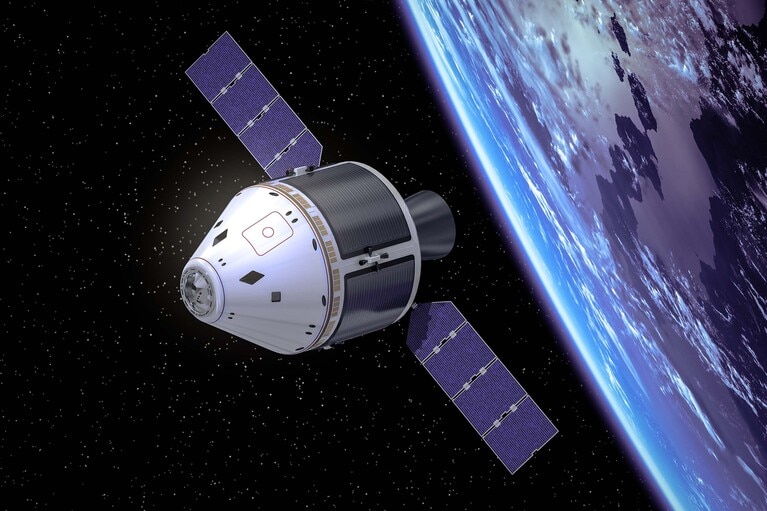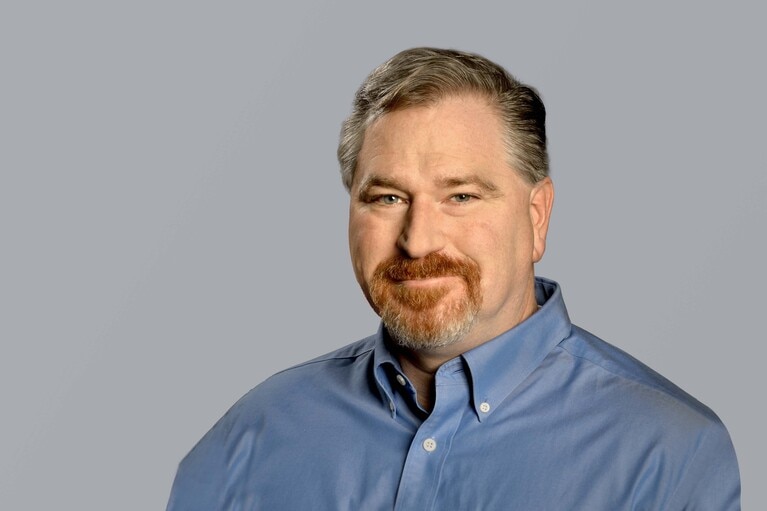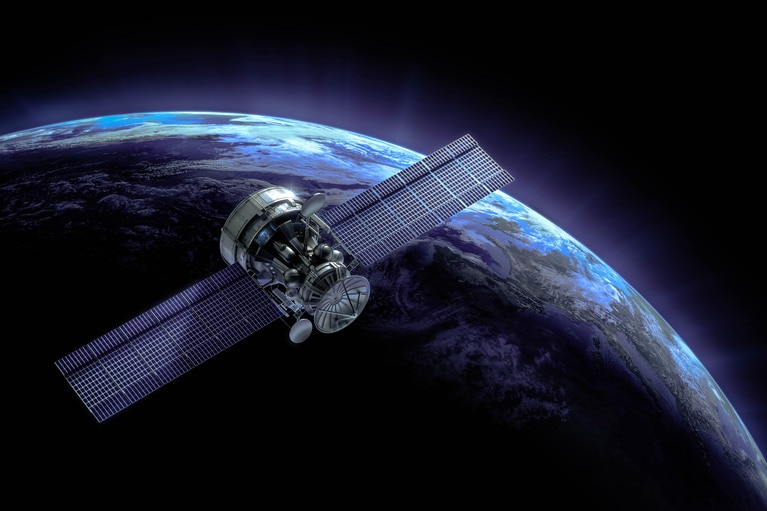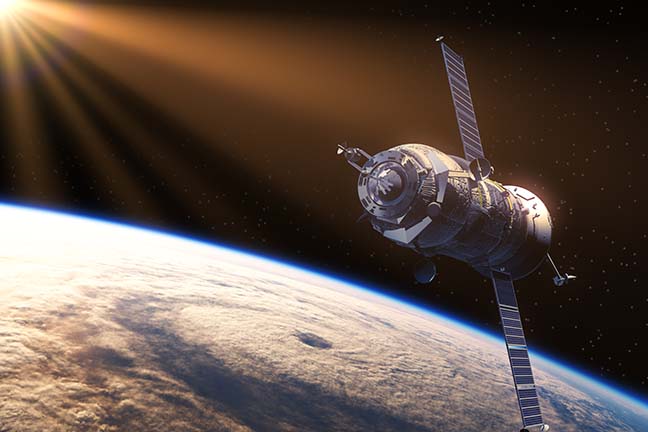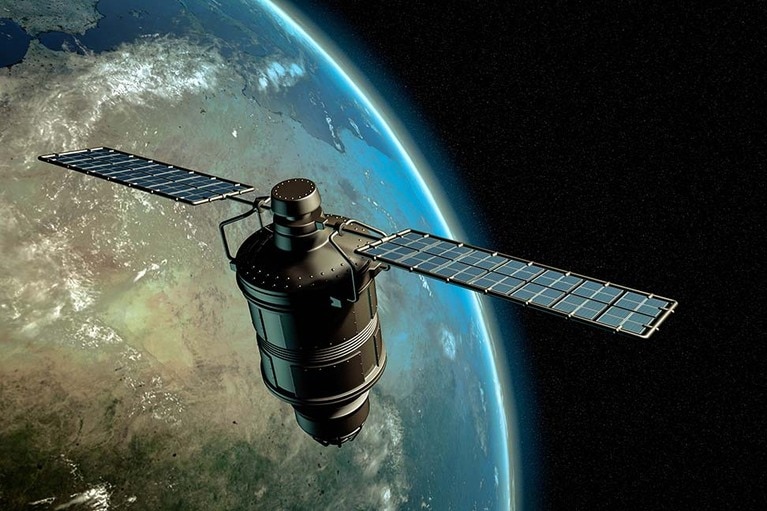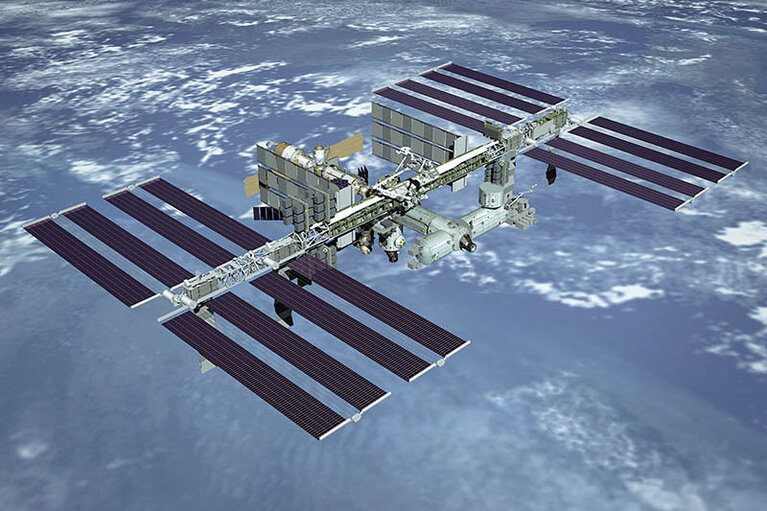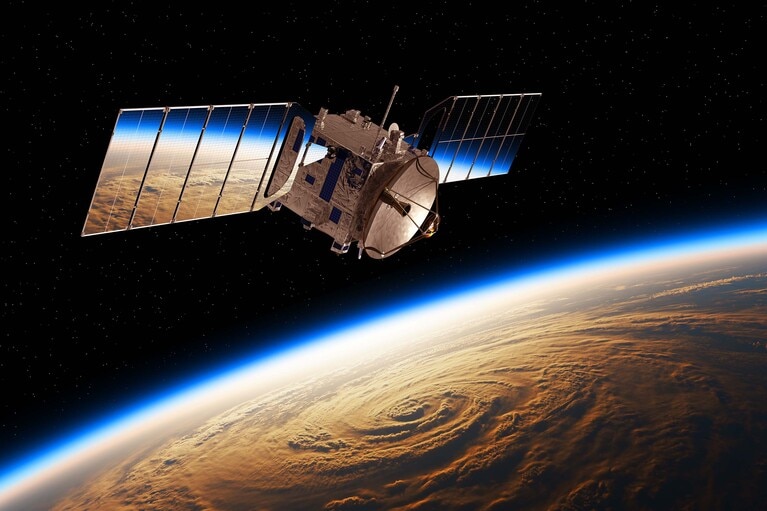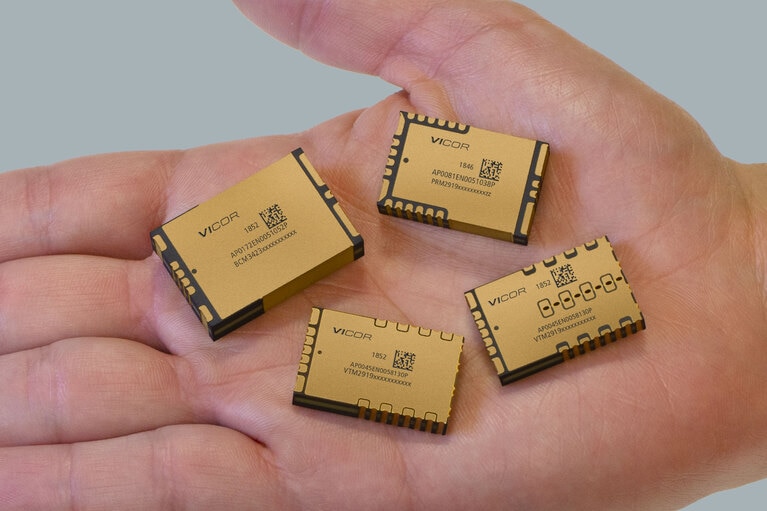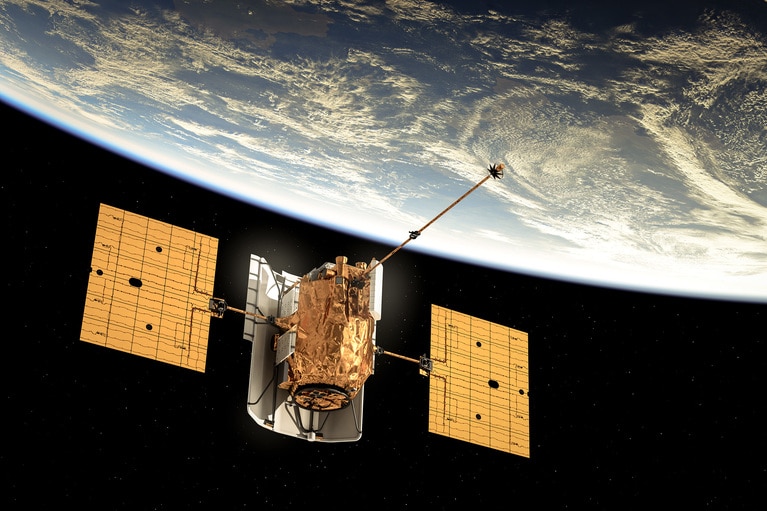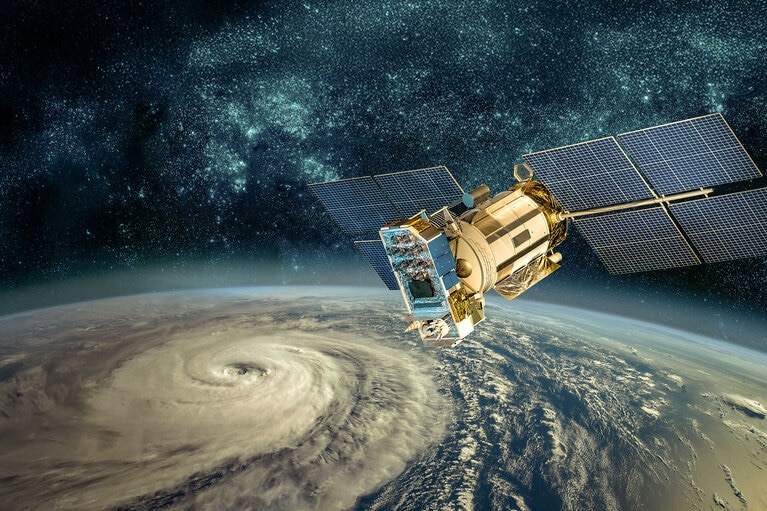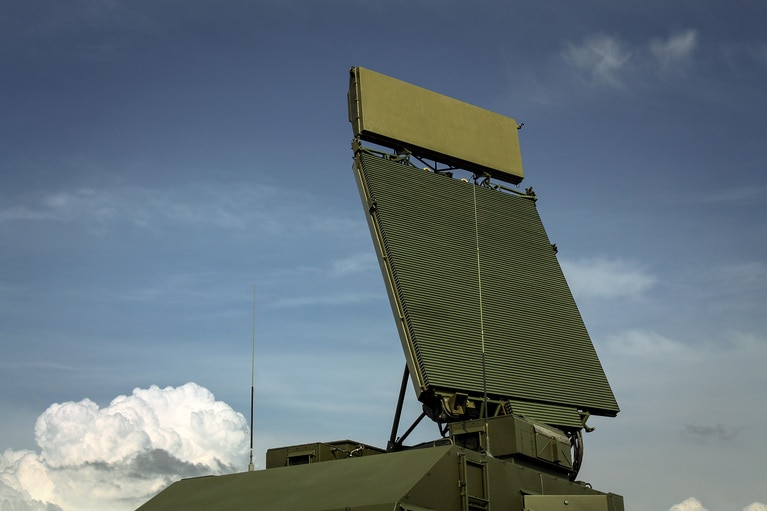
The future of standardized defense platforms using MOSA, SOSA and VPX open architectures
The future of standardized defense platforms using MOSA, SOSA and VPX open architectures
Dear vicorpower.com users:
In an effort to improve the Vicor website, we will be conducting maintenance on the site Dec. 29th between 11:30 am and 2pm am EST.
Certain parts of the site may not be available during this time, specifically product pages and family matrices.
We apologize for any inconvenience and thank you for your patience.
– Vicor Web Team
Vicor has compiled a list of commonly asked questions that pertain to designing a power supply in space for LEO and MEO satellites.
By Rob Russell, VP of Satellite Business Unit
Q: What are some of the challenges of operating in space?
A: Space is nearly void of all matter, that is, a hard vacuum. There is no air to speak of that can support life or provide heating or cooling conduction and convection. Temperature extremes for the ISS range from –250oF on the dark side to 250oF in sunlight requiring temperature control systems. Getting to space is no easy ride requiring a rocket launch that imposes large acceleration and vibration forces to the spacecraft. The spacecraft must provide for its own power using on board energy storage, some form of fuel and or solar panels. Radiation levels are high outside earth’s atmosphere causing degradation to the spacecraft. Space debris and meteoroids must be avoided. Low orbits must account for atmospheric drag else succumb to eventual reentry.
Q: What is New Space?
A: New Space, sometimes referred to as Space 2.0, is a low-cost approach to space developed by private companies. Private companies have dramatically reduced launch and satellite costs to a level where commercial companies, universities and government programs can now access space at a fraction of previous costs. Satellites can be built with lower grade radiation tolerant components and sometimes even use commercial parts for their cost advantage. Competition among commercial companies continues to drive costs down. Fully radiation hardened parts often lag technologically, New Space takes advantage of modern technology advances in computing as one example.
Q: What is radiation?
A: In space, radiation consists of a complex mixture of high energy electromagnetic waves and subatomic particles. The electromagnetic waves are similar to visible light however are higher in frequency such as x-rays and gamma rays. The subatomic particles get their high energy from their speed. The particles consist of a mixture of electrons, protons, alpha particles (a helium nucleus) and the nucleus of heavier elements. The subatomic particles are called cosmic rays.
Q: What is ionizing radiation?
A: Radiation with sufficiently high energy that can remove one or more electrons from matter thereby creating ions. By freeing electrons, the atom becomes a positively charged ion.
Q: What are the sources of radiation in space?
A: Near earth, most space radiation is emitted from our sun, but some comes from far away stars and galactic events. Many charged particles are trapped in the earth’s magnetic field creating the Van Allan radiation belts which are areas of high radiation surrounding the earth.
Q: Is radiation dangerous?
A: The health effects of radiation are dependent on the cumulative amount, the energy and the particle makeup of radiation. Radiation is considered dangerous to life as low doses of ionizing radiation can cause damage to DNA causing cell mutations. Doses of between 100 to 600 rad (measurement for radiation) can cause stomach discomfort, fatigue and vomiting. However, doses of 200 to 800 rad without medical assistance has a 50% of causing death within 60 days. Doses of 800 or more rad are almost certainly lethal without treatment.
Q: How can astronauts survive in space?
A: For astronauts to survive in space we must provide them with an environment suitable for life. That means a breathable atmosphere, temperature controls, physical protection from meteoroids, micrometeoroids and space debris and protection from radiation. Food and water must be planned carefully so as to not run out between re-supply missions.
Q: How does radiation affect spacecraft?
A: Radiation can alter material characteristics with permanent or temporary degradation. Electrical charge can build up on surfaces eventually discharging as static charges. A single event effect or SEE is the immediate result of a high energy charged particle releasing its energy in electronics. It can change logic bits upsetting a computer or may cause permanent destructive damage. Long term radiation known as total ionizing dose, or TID, gradually changes the performance of electronics. With enough TID circuits will stop functioning as designed.
Q: How do we protect spacecraft from radiation?
A: Several approaches are used and often in combination. Most start by selecting materials that resist radiation. Testing of materials and electronics for radiation effects is a big part of a satellite design. Knowing the orbit and lifetime, engineers can use several tools to predict the environment external to the spacecraft. Shielding is used to absorb and reduce the effects of much of the ionizing radiation. But shielding is complex: shielding can stop low energy radiation, but high energy cosmic rays may produce a shower of secondary ionized particles after passing through thin shielding. Shields are heavy and don’t contribute to the mission, so a trade of shielding vs radiation tolerant parts is made. For critical functions some form of redundant hardware is often employed to mitigate against single event effects.
Q: Where do satellites get their power?
A: Most earth orbiting satellites get their power from the sun. Photo Voltaic (PV) panels on the spacecraft, similar to those used on rooftops, convert sunlight to electricity. However to save weight, the space grade PV cells often use higher efficiency, multi layered structures able to convert more of the light energy into electricity. The power that is generated will vary from shadowing of earth or other satellite parts, angle facing the sun, electrical load and age of the panels as darkening and radiation effects take their toll on efficiency. To correct for the variations, power conditioning units adapt the available power to the spacecraft and rechargeable battery and distribute a voltage bus to the satellite components. The batteries supply power during periods when the satellite is completely shaded by the earth. There are several common bus voltages but typically they range between 28V and 100V.
Q: How are electronic loads powered from the satellite bus?
A: Satellite power distribution can be complex. Subsystem loads require voltage regulation, isolation from the bus, noise filtering, transient suppression, fault isolation and adequate power delivered over a localized network. These tasks are accomplished by a combination of Power Distribution Units (PDU) and unit level power supplies sized for each load. The PDU provides fault isolation and may also regulate. The unit power supply commonly includes voltage regulation from the bus voltage to load levels ranging from 0.5V to 12V, bus isolation, noise filtering and transient suppression and sometimes includes fault protection.
Q: What is Vicor’s approach to rad tolerant power?
A: Vicor had developed a product line that considers the unique requirements for space products including the effects of TID and SEE. The semiconductor components have been chosen to have a tolerance to both radiation effects. Vicor tests all lots of parts to ensure product radiation capabilities will be met. The modules incorporate dual power train structures that assure power integrity during single event effects enabling critical loads to receive continuous power without interruption.
Q: What are the benefits of Vicor’s radiation tolerant solution?
A: Vicor’s radiation tolerant power converters offer high power density, high conversion efficiency, small size and weight and low noise switching performance. These benefits are achieved through Vicor’s use of zero-voltage and zero-current switching techniques which allow for efficient high frequency operation.
Q: What is Vicor’s total dose (TID) rating for rad tolerant products?
A: Vicor’s radiation tolerant power products are rated at 50k rad TID. New modules have been tested and still maintain published ratings up to 80k rad TID.
Q: How does Vicor ensure radiation performance for the radiation tolerant power components?
A: Vicor maintains a strict control over materials used in the radiation tolerant product line. All semiconductors susceptible to radiation are tested on a lot basis. Only those lots that pass our stringent tests are transferred to be used in assembling the radiation tolerant modules.
Q: How will the Vicor rad tolerant DC-DC converters survive in a SEE environment?
A: Vicor has paid attention to every detail in the design and parts selection for the radiation tolerant DC-DC converter line. Heavy ion tests are required for the components used in radiation tolerant products. We test MOSFETS for single event burnout, SEB, and single event gate rupture, SEGR. Significant voltage de‑ratings are applied to the MOSFETS insuring survival. Devices may only be used if they can survive a linear energy transfer, LET, of > 35 MeV-cm2/mg.
Q: Will Vicor radiation tolerant products upset in a SEE environment?
A: Vicor has performed extensive characterization of the modules in a heavy ion environment. Heavy ions may cause functional upsets, SEFI, to the power train. We have taken the approach to detect all forms of SEFI and reset the power train. Each of Vicor’s radiation tolerant power modules include two power trains which normally operate in parallel. If one power train becomes upset from charged particles and is reset, the parallel unit assumes the full load for the duration of the reset time, a form of active redundancy. When the upset module comes back online, both halves of the module share the load again. This dual power train approach ensures that power will be delivered reliably in a SEE environment.
Q: Are Vicor rad tolerant products qualified for space?
A: Vicor has passed a qualification flow suitable for non-hermetic modules intended for space applications. The four qualified modules are a Bus Converter Module, BCM®, a Pre‑Regulator Module, PRM™, and two Voltage Transformation Modules, VTM™. The qualification flow includes burn in, thermal cycling, temperature humidity bias, high temperature operating life, and a rigorous highly accelerated life test.
Q: Can Vicor radiation tolerant power conversion products operate from any spacecraft bus?
A: The initial product family is designed to operate from a 100V spacecraft bus. With a slight change in the Bus Converter Module, BCM, and Pre‑Regulator Module, PRM, the products can operate over any common bus including 28V, 50V and 70V.
Q: Are the Vicor radiation tolerant modules de‑rated for reliable operation?
A: All modules have been de‑rated following IPC-9592B and can meet common space de‑ratings when operated at conservative case temperatures.
Q: Is a data package available to support my customer’s requirements’ verification?
A: Yes, under contract, Vicor can supply a complete data package that includes analyses for worst case circuit performance, radiation, thermal, stress de‑rating, FMEA and reliability.
Q: How are the Vicor rad tolerant modules manufactured?
A: Vicor has invested heavily in Advanced Product manufacturing processes called SM‑ChiP™ package, a high density package optimized for power products. The molded and plated module has been designed to facilitate heat transfer to the customer’s heatsink. The modules may be assembled on the host PCB using common SMT assembly equipment.
Q: Where are the Vicor radiation tolerant modules manufactured?
A: All Vicor radiation tolerant products are assembled in the USA.
Q: Does Vicor have flight heritage on rad tolerant products?
A: Vicor anticipates first flight in the third quarter of 2022.
Q: Are there export restrictions on Vicor Space products?
A: Vicor rad tolerant power products are rated EAR99 for export.
Q: Where can I get data on Vicor radiation tolerant power products?
Rob Russell is currently the Vice President of Satellite Business Development and has worked at Vicor Corporation for over 10 years in various strategic marketing, product marketing, and business development roles. He has over 29 years of sales and marketing experience in the electronics industry. He earned both his BSEE and MBA at the University of Massachusetts. Before Vicor, he worked for Power-One as the Vice President of Product Marketing and Director of Global Strategic Sales.
Rob Russell, VP of Satellite Business Unit
Satellite solutions: High speed, low latency network coverage for the world
Article: Radiation-tolerant power electronics key to filling satellite infrastructure gap
Article: High-density power is needed to keep pace with projected 20X growth in New Space
Article: Challenges and design considerations for designing a power delivery network for New Space
Radiation-tolerant power modules
The future of standardized defense platforms using MOSA, SOSA and VPX open architectures
The future of standardized defense platforms using MOSA, SOSA and VPX open architectures
Delivering higher power density and low noise for New Space applications
Patented power design techniques and architectures needed to deliver optimal power and low noise for space communications applications
Spacechips high current transponder powers on-orbit AI-driven communication
Smaller satellites with sophisticated computational capabilities is in demand. Learn how low-noise, AI-enabled power is driving creative new applications
Current multipliers: The obvious choice for powering AI processors and other demanding applications
AI processors need to handle low-voltage, high-current demand, which can cause power system bottlenecks. Learn how current multiplication can change that
